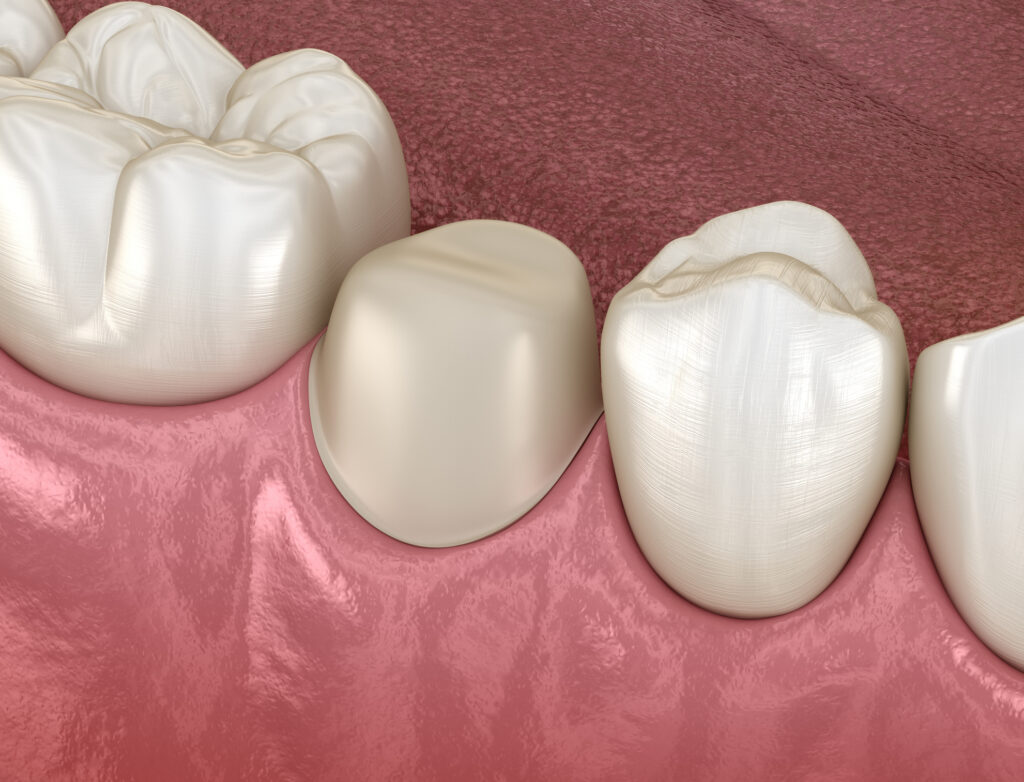When decay creeps below the gumline, a tooth fractures at the margin, or the visible (clinical) crown is simply too short to support a lab-made restoration, your restorative dentist may refer you to a periodontist at Precision Periodontal and Implant Center for crown lengthening.
This minimally invasive procedure removes just enough gum tissue—and, when necessary, a millimeter or two of bone—to expose healthy enamel. A well-fitting crown can then seal the tooth properly, preventing recurrent decay and ensuring the gum attachment stays stable for years to come.
What the Procedure Looks Like—Step by Step
- Local anesthetic. Your periodontist numbs the area so you stay comfortable from start to finish.
- Micro-incision & tissue sculpting. Using microsurgical instruments or a focused dental laser, we gently lift the gum and contour soft tissue. If bone is blocking access, we remove a tiny rim so the new crown margin will rest on solid enamel.
- Precise repositioning. The gum is sutured a few millimeters higher on the tooth, instantly creating the space your restorative dentist needs. Most single-tooth sessions take under an hour, and many patients drive themselves home.
Does Crown Lengthening Hurt?
Think “scraped knee” rather than “major surgery.” The site may feel tender for a day or two, but most people control discomfort with over-the-counter pain relievers. Mild swelling is normal the first evening; an ice pack on and off for ten-minute intervals keeps it in check.
Recovery Tips for a Smooth Healing Journey
- Soft foods only for three days—yogurt, eggs, smoothies, and lukewarm soup are perfect.
- Skip the spice and crunch. Hot, spicy, or sharp-edged foods can irritate the healing edge.
- Rinse, don’t swish. Use the antimicrobial mouthwash we prescribe morning and night, letting it bathe the area rather than forcefully swishing.
- Hands off! Tugging your cheek to “take a look” can loosen sutures and prolong healing.
- Plan your crown prep at least six weeks later so the gum margin is fully mature.
What Happens If I Skip the Procedure?
Pushing a crown onto a short tooth often leaves a microscopic gap that invites bacteria. Within months you could see recurrent decay, crown loosening, or chronic gum inflammation from excess cement trapped under the tissue. Crown lengthening is a one-time investment that protects your restoration and your overall periodontal health.
How Precision Periodontal and Implant Center Makes the Experience Seamless
At Precision Periodontal and Implant Center, your periodontist partners closely with your restorative dentist, sharing digital photos and precise measurements of the new gumline so your final crown fits like a glove. For anxious patients, we offer oral or IV sedation, and our team is always just a call away at 424-626-1960 if questions pop up during healing.
Key Takeaway
Crown lengthening isn’t cosmetic fluff—it’s the structural foundation that lets your new crown or veneer last. If your dentist has recommended it, schedule a consultation with the periodontal specialists at Precision Periodontal and Implant Center to learn how one short visit today can save you from costly retreatment tomorrow.

